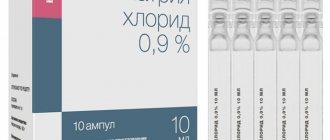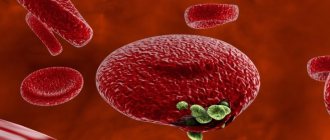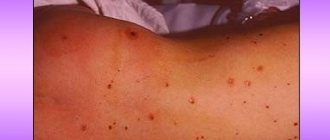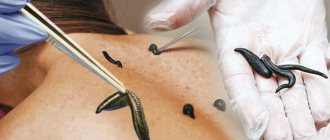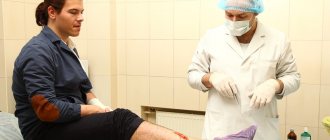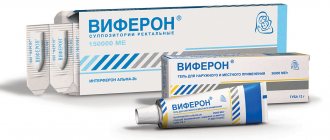Infectious disease specialist
Sinitsyn
Olga Valentinovna
33 years of experience
Highest qualification category of infectious disease doctor
Make an appointment
Dengue fever is an infectious disease transmitted by insects. The pathology has a clear geographic location and occurs more often in the countries of Southeast Asia, regions with a subtropical climate in Australia and South America. Due to the intensive development of tourism in these regions, cases of the disease are also observed in other countries, but they are isolated. Every year, Dengue fever is diagnosed in hundreds of thousands of people on the planet, some of whom do not have the opportunity to receive timely medical care and are forced to put up with serious complications of the infection.
Causes of Dengue Fever
The causative agent of the disease is the Dengue arbovirus, which can be found in the body of mosquitoes and arthropods. There are several serotypes, each of which gives approximately the same picture of the disease in the human body. The pathogen is resistant to climatic factors, however, it quickly dies under the influence of UV radiation and a sharp increase in ambient temperature.
The mechanism of transmission of the disease “Dengue fever” is associated with mosquitoes of the genus Aedes, which feed on the blood of humans and animals. When an infected subject is bitten, the pathogen enters the mosquito’s bloodstream, where it quickly multiplies without harming the host’s body. The incubation period can be up to 14 days, after which the insect and its bites become contagious. One contact of a Dengue fever carrier with a healthy body is enough for the virus to enter his blood, and the intensive development of the disease begins.
In the human body, the incubation period of the virus lasts about 7-15 days, and the acute stage lasts from 7 to 12 days. The course of the disease is wavy and consists of two peaks of increased body temperature, between which a weakening of symptoms is observed. However, this is not a reason to stop treatment, otherwise the risk of relapse and complications increases significantly.
Global Dengue Burden
Over the past decades, the incidence of dengue in the world has increased sharply. In the vast majority of infected people, the infection is asymptomatic or mild and without seeking medical help, and therefore actual cases of the disease are not fully registered. In addition, dengue is often mistaken for other febrile diseases [1].
One model estimates that 390 million dengue virus infections occur annually (95% confidence interval 284–528 million), of which 96 million (67–136 million) are clinical (all disease severity) [2]. Another study on dengue prevalence estimates that 3.9 million people are at risk of contracting dengue viruses. Although the risk of infection exists in 129 countries [3], 70% of the actual disease burden occurs in Asia [2].
Over the past two decades, the number of dengue cases notified to WHO has increased more than eightfold, from 505,430 cases in 2000 to more than 2.4 million in 2010 and 5.2 million in 2021. registered deaths between 2000 and 2015 increased from 960 to 4,032.
This alarming increase in incidence is partly due to changes in national practices for registering cases and reporting dengue to ministries of health and WHO. But it also shows that governments recognize the burden of dengue and therefore the importance of reporting on that burden. Therefore, although the true global burden of disease has not been established, the observed increase nevertheless brings us closer to a more accurate estimate of its magnitude.
Symptoms of the disease
After a mosquito bite, the virus penetrates the cells of the lymph nodes and blood vessels, where its intensive replication begins. As the volume of pathogenic particles increases, they spread throughout the body and penetrate the internal organs, partially blocking their functioning. An intoxication syndrome occurs, the first sign of which is a feverish state.
Other symptoms of Dengue fever include:
- headache;
- copious discharge from the respiratory tract;
- aches in muscles and joints;
- vomiting and nausea, other signs of digestive system disorder;
- diarrhea;
- drop in blood pressure level.
Vectors of infection in the environment
The main carriers of DENV are Aedes aegypti mosquitoes. They live in urban environments and breed mainly in artificial containers. Ae. aegypti feed during the daytime; Their peak biting times are in the early morning and evening before sunset [19]. During each feeding period, the female Ae. Aegypti bites a large number of people [20]. Eggs laid by the female can remain viable for several months, and upon contact with water, they hatch into larvae.
Aedes albopictus, the second most important vector of dengue in Asia, has spread to more than 32 states in the United States and more than 25 countries in the European Region, largely as a result of international trade in waste tires (which provide breeding habitat) and other products (such as ornamental bamboo). Ae. Albopictus easily adapts to new conditions. Its geographic distribution is largely due to its ability to tolerate lower temperatures both as an egg and as an adult [21, 22]. Aedes albopictus is the main vector of DENV in a limited number of outbreaks – where Aedes aegypti is either not present or present in low numbers [23, 24].
Forms of the disease
The symptomatic picture allows us to classify the disease as follows:
The classic form of dengue fever. More often observed with primary lesions. Characteristic symptoms are a significant increase in body temperature, which after 3 days is replaced by normalization of the patient’s condition, after which the fever recurs. The disease is also indicated by signs of intoxication, muscle pain, discomfort in the spine, swelling of the face, neurological disorders such as dizziness and insomnia. The rash on the body that appears at the initial stage of the disease disappears after 3-7 days. The rash may resemble scarlet fever, appear as small hemorrhages, or appear as blisters.
Hemorrhagic form. It is more often observed in persons secondarily infected with the causative agent of Dengue fever. The incubation period can last up to 10 days, after which symptoms appear in the form of intoxication, lethargy and characteristic rashes. The latter can appear from several points to an extensive spot, which often has complications in the form of nosebleeds and internal hemorrhages. Blood particles are observed in the patient's stool and urine.
Dengue fever in children. In a child’s body, the pathogen makes itself felt with vague symptoms, which complicates diagnosis and does not allow timely treatment measures to be taken. More often, patients experience symptoms of Dengue fever such as intoxication syndrome, fever and rash, dry cough and difficulty breathing. The duration of the disease is about 7 days.
Dengue spread and outbreaks
Before 1970, severe dengue epidemics occurred in only nine countries. The disease is currently endemic in more than 100 countries in the African, American, Eastern Mediterranean, Southeast Asian and Western Pacific regions. The regions most affected are the Americas, Southeast Asia and the Western Pacific, with Asia accounting for about 70% of the global burden of disease.
The spread of the disease to new areas, including in Europe, is accompanied not only by an increase in the number of cases, but also by rapid outbreaks. The threat of dengue outbreaks in Europe has emerged in recent years; In 2010, local transmission was reported for the first time in France and Croatia, and imported cases were detected in three other European countries. In 2012, a dengue outbreak on the island of Madeira, Portugal, infected more than 2000 people, with imported cases detected in mainland Portugal and ten other European countries. Currently, autochthonous cases of the disease occur almost annually in many European countries. Dengue is the second most commonly diagnosed cause of fever in people returning from travel to low- and middle-income countries, after malaria.
In 2021, dengue was imported into several new countries and countries such as Bangladesh, Brazil, India, Indonesia, Yemen, Mauritania, Maldives, Mayotte (France), Nepal, Cook Islands, Singapore, Sudan, Thailand, Timor -Leste, Sri Lanka and Ecuador have seen an increase in the number of cases. In 2021, dengue continues to spread in Brazil, the Cook Islands, Colombia, Fiji, Kenya, Paraguay, Peru and Reunion Island.
The COVID-19 pandemic is placing extraordinary strain on health and governance systems around the world. WHO emphasizes the importance of continuing efforts to prevent, detect and treat vector-borne diseases such as dengue and other arbovirus infections during this difficult period, given the increase in the number of cases of both groups of diseases that most threaten urban populations. The combined impact of the COVID-19 and dengue epidemics could potentially lead to catastrophic consequences for at-risk populations.
In 2021, a record number of dengue cases were reported worldwide. All WHO regions were affected; dengue transmission was first identified in Afghanistan.
In the Region of the Americas alone, 3.1 million cases were reported, with more than 25 000 cases classified as severe. Despite the alarming incidence statistics, the number of dengue-related deaths was lower than the previous year.
In Asia, the highest numbers of infections were reported in Bangladesh (101,000), Vietnam (320,000), Malaysia (131,000) and the Philippines (420,000).
2021 also saw major dengue outbreaks, with more than 2.38 million cases reported in the Region of the Americas. There were about 1.5 million cases in Brazil alone that year, about three times more than in 2014; the region also reported 1,032 dengue deaths. In the same year, there were more than 375 000 suspected dengue cases in the Western Pacific Region, of which 176 411 cases were reported in the Philippines and 100 028 cases in Malaysia, similar to the disease burden in these two countries in the previous year . An outbreak was declared in the Solomon Islands, where more than 7,000 people were suspected of infection. In the African Region, a localized dengue outbreak was reported in Burkina Faso, where there were 1,061 suspected cases.
In 2021, the Americas recorded a significant decrease in the number of infections: from 2,177,171 cases in 2021 to 584,263 cases in 2021. Accordingly, the decrease was 73%. Only Panama, Peru and Aruba saw an increase in cases in 2021.
Similarly, a 53% reduction in severe dengue cases was reported in 2021. The decline in dengue cases has occurred since the Zika virus outbreak (post-2021), but the specific factors contributing to the decline are still unknown.
Diagnostic methods
The doctor makes a preliminary diagnosis already at the stage of the initial examination and medical history. Unmistakable signs of fever are skin rashes, swollen lymph nodes, pain in the joints and muscles, as well as the wave-like development of a feverish state. If the patient has recently been to countries that are “dangerous” from the point of view of infection, he is immediately sent for laboratory tests:
- A polymerase chain reaction method that allows you to detect the presence of virus particles in the blood. Due to its high accuracy, it is of priority importance in diagnosis.
- Serological methods of blood testing, through which it is possible to clarify the presence of antibodies to the causative agent in the blood.
- General blood analysis. When the level of leukocytes and platelets decreases relative to the normative level, we can speak of a pathological state of the body.
Differentiated diagnostics allows you to accurately determine the fact of infection. Its goal is to exclude malaria, influenza, measles and rubella, which at the initial stage of the disease have similar symptoms.
The hemorrhagic form of dengue fever can be determined using the so-called flagella test. A tourniquet is applied to the patient’s upper limb, after which, after removing it five minutes later, new areas of rash can be noticed on the skin.
Dengue prevention and control
Patients with established dengue should avoid further mosquito bites during the first week of illness. During this time, the virus can circulate in the blood and the patient can transmit the virus to other uninfected mosquitoes, which in turn can infect other people.
One of the most important risk factors for contracting dengue and other infections transmitted by Aedes mosquitoes is the proximity of mosquito breeding sites to human habitats. Currently, the main way to contain or prevent the transmission of the dengue virus is to control the mosquitoes that carry it. This is achieved through the following measures:
- preventing mosquito breeding: preventing mosquitoes from accessing egg-laying sites by designing and modifying environmental facilities;
- Proper disposal of solid waste and destruction of man-made objects that may retain water and provide mosquito habitat;
- storing water supplies in closed containers indoors and emptying and washing containers weekly;
- treating outdoor water storage containers with suitable insecticides;
- Personal protection against mosquito bites: use of personal household protection such as window mosquito nets, repellents, insecticide-treated materials, coils and vaporizers. These measures need to be taken during the day, both inside and outside the home (for example, at work/school), since mosquitoes, which are the main vectors of infection, bite throughout the day;
- wearing clothing that covers the skin as much as possible, protecting it from mosquito bites;
- community outreach: informing the public about the risks associated with mosquito-borne diseases;
- interaction with the public for more active and targeted involvement of the population in the systematic fight against vectors of infection;
- Reactive vector control measures: Public health authorities can implement emergency vector control measures, such as indoor spraying of insecticides during disease outbreaks;
- active surveillance of mosquitoes and the virus: to determine the effectiveness of vector control activities, active monitoring and surveillance of their species abundance and composition is necessary;
- Prospective monitoring of virus prevalence among mosquito populations should be undertaken based on active screening of mosquito indicator collections;
In addition, many groups of international partners continue to conduct research to find new tools and innovative strategies that will contribute to global efforts to stop the transmission of dengue, as well as other mosquito-borne diseases. WHO encourages the integrated use of different vector control approaches to ensure the continuity and effectiveness of locally tailored vector control interventions.
Treatment
A mandatory requirement for the patient when treating Dengue fever is immediate hospitalization. Treatment is carried out under the strict supervision of a doctor and includes the following medications:
- Painkillers and anti-inflammatory drugs.
- Sleeping pills and sedatives.
- Glucocorticosteroids to eliminate symptoms of intoxication.
- Antibiotics that destroy pathogens.
- Multivitamin complexes to support the immune system.
To prevent dehydration when treating symptoms of Dengue fever, drinking plenty of fluids and infusion therapy (drips) with glucose preparations are recommended.
WHO activities
WHO's response to dengue is as follows:
- assisting countries in confirming outbreaks through a network of collaborating laboratories;
- providing countries with technical support and guidance to effectively control dengue outbreaks;
- helping countries improve reporting systems and recording the true burden of disease;
- providing specialized training in clinical management, diagnosis and vector control at country and regional levels in collaboration with a number of WHO collaborating centres;
- developing evidence-based strategies and policies;
- supporting countries in developing dengue prevention and control strategies and implementing the Global Vector Control Action (2017–2030);
- conducting reviews of new disease control tools, including insecticides and technologies for their use;
- collection of official data on dengue and severe dengue from more than 100 Member States; And
- publication of recommendations and manuals for Member States on surveillance, patient care, diagnosis, prevention and control of dengue.
Diagnosis and treatment of Dengue fever at the clinic of JSC "Medicine"
If you discover signs of a dangerous disease after returning from countries in the tropical region of Asia, immediately make an appointment with an infectious disease specialist at the JSC Medicine clinic. At your service is our own diagnostic center and outpatient clinic, where you can undergo a treatment course under the supervision of a specialist. Each visitor is guaranteed attentive attention, confidentiality, and a full range of necessary diagnostic and therapeutic procedures. Appointments can be made online and by telephone during business hours.

